Universal Disk Format (UDF) is an open, vendor-neutral file system for computer data storage for a broad range of media. In practice, it has been most widely used for DVDs and newer optical disc formats, supplanting ISO 9660. Due to its design, it is very well suited to incremental updates on both write-once and re-writable optical media. UDF was developed and maintained by the Optical Storage Technology Association (OSTA).

In computing, an optical disc drive (ODD) is a disc drive that uses laser light or electromagnetic waves within or near the visible light spectrum as part of the process of reading or writing data to or from optical discs. Some drives can only read from certain discs, while other drives can both read and record. Those drives are called burners or writers since they physically burn the data onto on the discs. Compact discs, DVDs, and Blu-ray discs are common types of optical media which can be read and recorded by such drives.
An optical disc image is a disk image that contains everything that would be written to an optical disc, disk sector by disc sector, including the optical disc file system. ISO images contain the binary image of an optical media file system, including the data in its files in binary format, copied exactly as they were stored on the disc. The data inside the ISO image will be structured according to the file system that was used on the optical disc from which it was created.

Optical disc authoring, including CD, DVD, and Blu-ray Disc authoring, is the process of assembling source material—video, audio or other data—into the proper logical volume format to then be recorded ("burned") onto an optical disc. This act is sometimes done illegally, by pirating copyrighted material without permission from the original artists.

DVD-RAM is a DVD-based disc specification presented in 1996 by the DVD Forum, which specifies rewritable DVD-RAM media and the appropriate DVD writers. DVD-RAM media have been used in computers as well as camcorders and personal video recorders since 1998.

K3b is a CD, DVD and Blu-ray authoring application by KDE for Unix-like computer operating systems. It provides a graphical user interface to perform most CD/DVD burning tasks like creating an Audio CD from a set of audio files or copying a CD/DVD, as well as more advanced tasks such as burning eMoviX CD/DVDs. It can also perform direct disc-to-disc copies. The program has many default settings which can be customized by more experienced users. The actual disc recording in K3b is done by the command line utilities cdrecord or cdrkit, cdrdao, and growisofs. As of version 1.0, K3b features a built-in DVD ripper.
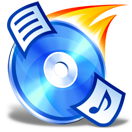
CDBurnerXP is an optical disc authoring utility for Windows 2000 and later, written mostly in Visual Basic .NET as of version 4, released in September 2007. It has international language support. The software is available to download in both 32-bit and 64-bit variants.

Toast is an optical disc authoring and media conversion software application for macOS. Its name is a play on the word burn, a term used for the writing of information onto a disc through the use of a laser.

Optical disc authoring requires a number of different optical disc recorder technologies working in tandem, from the optical disc media to the firmware to the control electronics of the optical disc drive.
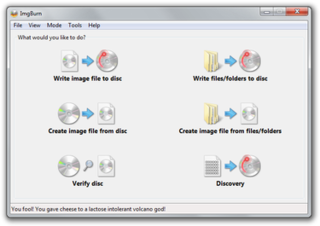
ImgBurn is an optical disc authoring program that allows the recording of many types of CD, DVD and Blu-ray images to recordable media. Starting with version 2.0.0.0, ImgBurn can also burn files and data directly to CD or DVD. It is written in C++. It supports padding DVD-Video files so the layer break occurs on a proper cell boundary.
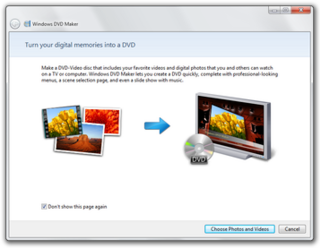
Windows DVD Maker is a discontinued DVD authoring application developed by Microsoft introduced in Windows Vista, available in the Home Premium and Ultimate editions of Windows Vista for users to create slideshows and videos for playback on media devices including DVD players and the Xbox 360 home video game console. It is also available in the Home Premium, Professional, Enterprise, and Ultimate editions of Windows 7, but it is no longer available as of the release of Windows 8.

The Xbox 360 HD DVD Player is a discontinued accessory for the Xbox 360 console that enables the playback of movies on HD DVD discs. Microsoft offered the drive for sale between November 2006 and February 2008. It was initially sold for $199.

InfraRecorder is an open-source CD and DVD writing program for Microsoft Windows. First started by Christian Kindahl in the Google Summer of Code 2006, InfraRecorder uses the cdrtools software library to perform the actual burning.

CDRWIN was a CD/DVD burning software for Microsoft Windows developed by Golden Hawk Technology company.
It progressed from lone wolf Jeff Arnold's hobby to a full-blown recording software that equals the power, performance, and features of many of the programs from the big boys.

HD DVD is an obsolete high-density optical disc format for storing data and playback of high-definition video. Supported principally by Toshiba, HD DVD was envisioned to be the successor to the standard DVD format, but lost to Blu-ray, supported by Sony and others.
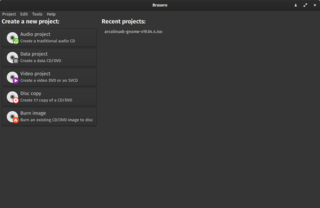
Brasero is a free and open-source disc-burning program for Unix-like operating systems, it serves as a graphical front-end to cdrtools, cdrskin, growisofs, and (optionally) libburn. It is licensed under the terms of the GNU General Public License.
The Image Mastering Application Programming Interface, or IMAPI, is a component of Microsoft Windows operating system used for CD and DVD authoring and recording.
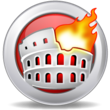
Nero Burning ROM, commonly called Nero, is an optical disc authoring program from Nero AG. The software is part of the Nero Multimedia Suite but is also available as a stand-alone product. It is used for burning and copying optical media such as CDs, DVDs, and Blu-ray disks. The program also supports the label printing technologies LightScribe and LabelFlash, and can be used to convert audio files into other audio formats.












